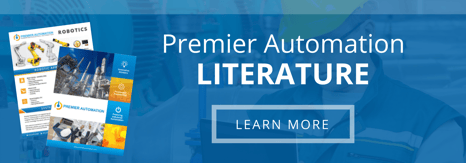.png?width=236&name=cascade%20(1).png) Multiple sensors are often used for measuring parameters in controlled processes. In such cases, cascade control systems offer a much more viable and better choice than traditional single-measurement controllers. For instance, a temperature sensor that measures and alters the valve actuator in a steam-fed water heater may seem like a complete solution, but it would start to bottle-neck once multiple parameters start chipping in, such as mechanical friction.
Multiple sensors are often used for measuring parameters in controlled processes. In such cases, cascade control systems offer a much more viable and better choice than traditional single-measurement controllers. For instance, a temperature sensor that measures and alters the valve actuator in a steam-fed water heater may seem like a complete solution, but it would start to bottle-neck once multiple parameters start chipping in, such as mechanical friction.
A better way in such cases would be to develop a cascaded control system that can compensate for the dozens of factors that are play while a process in being automated. A cascaded control system makes use of multiple controllers so that all aspects can be monitored and the final adjustment be sent to the actuator accordingly.
Elements of Cascade Control
A cascaded control can be understood by the flow diagram below:

The sample system consists of two controllers, two sensors and one actuator acting on two processes, in series. The primary controller serves as the set point generator for the secondary controller, which in turn uses the actuator to control the secondary process. This then generates a secondary process variable that provides a controlling influence over the primary process.
If looked upon closely, it can be identified that the inner loop works like a traditional feedback control system with a set-point, a process variable and a controller, while the outer loop behaves in the same way, except for utilizing the inner loop as its actuator.
Requirements
It must be understood that a cascaded control system cannot solve every single feedback control problem, but in the right conditions, it can prove very advantageous.
The following must be taken into account when trying to identify the right circumstances:
- The inner loop holds influence over the outer loop, therefore the way in which the secondary controller will affect the primary process should be understandable or else the primary controlled will lose grip over its own process.
- The inner loop is more responsive than the outer one, therefore the secondary process must react to its controller’s efforts 3-4 times faster than the primary process reacts to its own.
- The inner loop’s disturbances are much less severe than those generated by the outer loop. If not, then the secondary controller will be stuck trying to correct its disturbances rather than applying a corrective effort to the primary process.
Steam-fed water heaters are agreeable examples of cascade control as raising/lowering the steam flow rate alters the temperature without requiring any additional actuators. A valve can control the steam flow rate almost immediately compared to the slow pace at which additional steam changes the temperature of the water in the tank.
Issues
Everything may not always go according to plan. Cascade control has a few drawbacks as well, the most notable one of which is the additional cost incurred due to the extra sensor and the controller. Such systems are more complex than single-measurement ones, and require twice as much tuning. In addition, if the inner loop is too aggressive and the two processes compete with each other closely, then this may bring instability to the closed-loop system. However, this is unlikely if the inner loop is faster than the outer one, inherently or through tuning.
If you’re seeking a partner for your next automation or controls project, contact one of our experienced engineers to schedule a free on-site visit:



.jpg?width=411&name=innovative%20(1).jpg)

